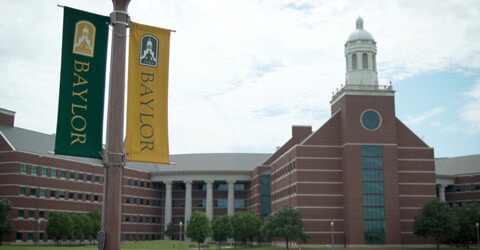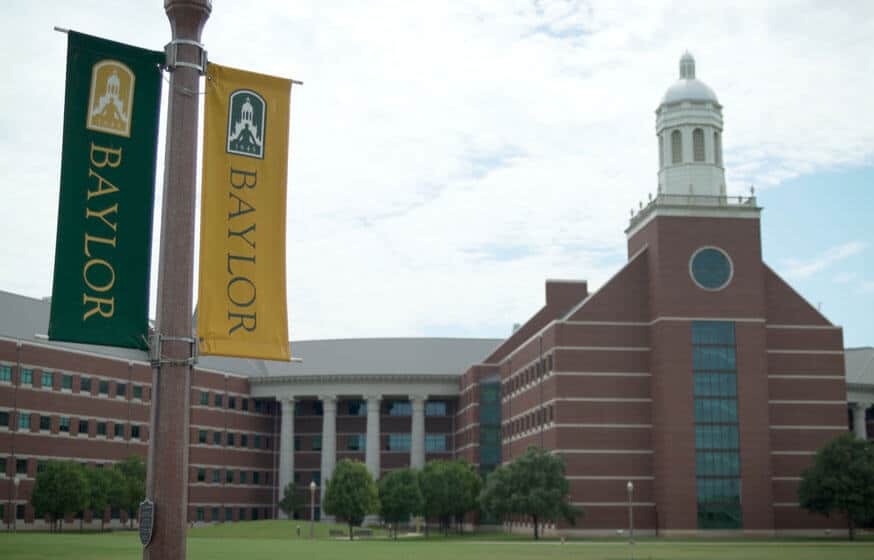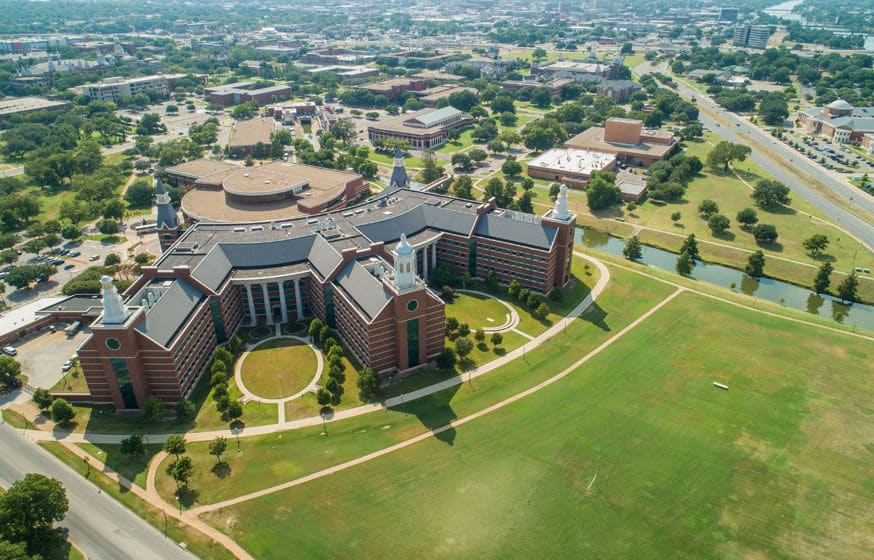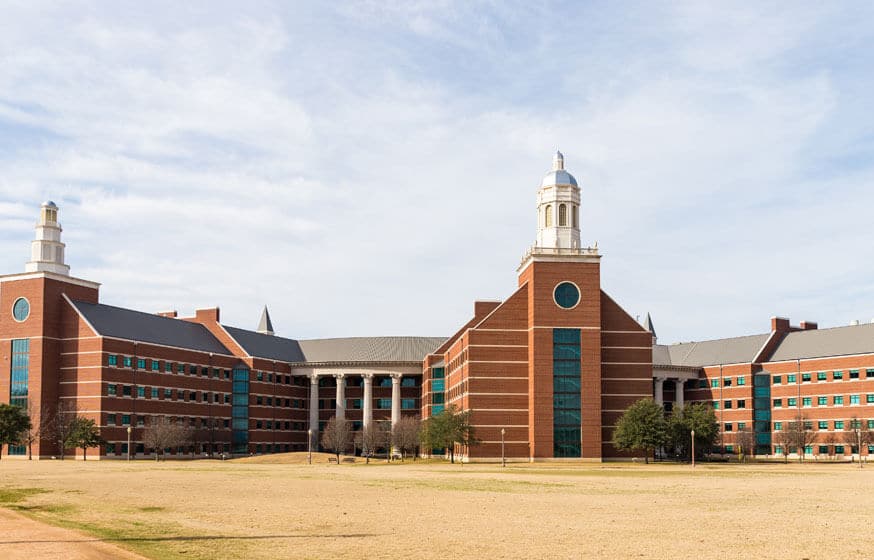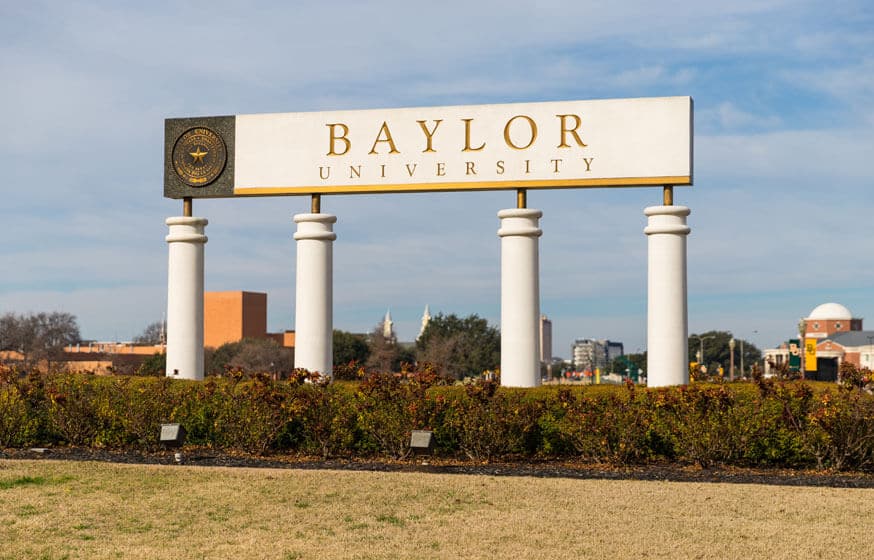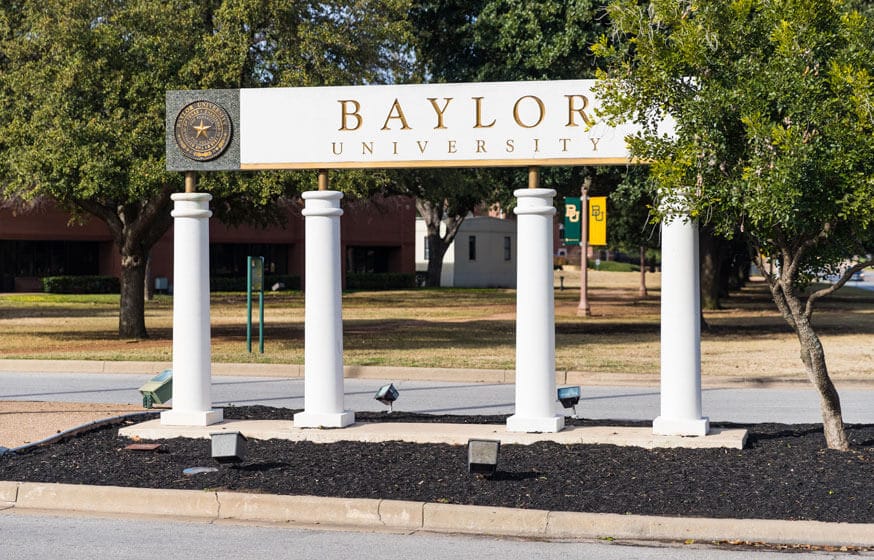Get Matched With Online Colleges
Baylor University is located in Waco, Texas and enjoys a terrific reputation as an academic powerhouse. Their 142 baccalaureate programs run the gamut and include humanities, engineering, computer science, business, and lots more. The Baylor campus is also home to eight libraries and ten institutes that address topics such as Art; Air Science; and Ecological, Earth, and Environment Sciences.
Search All Programs
Overview of Baylor University
Students can also take part in special programs that enrich their experience as undergraduates and which will boost their careers. Baylor supports a pre-law program, study abroad programs, business fellowships, and also an interdisciplinary core that marries the humanities with social sciences. Thus, Baylor students easily find that they can enter the exact program that will inform their later adult life.
This is not to say that Baylor students spend all of their time on their studies. Undergraduates spend their free time enjoying activities such as club soccer and a rock wall that supports both top-rope climbs and bouldering. In fact, the McLane Student Life Center is a hub of extra-curricular activity. Students can get a workout, play racquetball, or chill in the student lounge. The 156,000 square foot facility has something for everyone.
General Information
| School Type | Private not-for-profit |
|---|---|
| Campus Setting | City: Midsize |
| Campus Housing | Yes |
| Student Faculty Ratio | 13 to 1 |
| Graduation Rate | 78% |
| Year Founded | 1845 |

Student Enrollment
Total Students18,033
14,108
3,925
Undergraduate Student
Male 5,643
Female 8,465
Graduate Student
Male 1,570
Female 2,355
Explore Map
Top Rankings For Baylor University
Baylor Acceptance Rate and Admissions
APPLICATIONS34,582
ACCEPTANCE15,562
Acceptance Rate45%
Enrollment 3,268
| Admissions | |
|---|---|
| Application Fee | NA |
| High School GPA | Required |
| High School Rank | Required |
| High School Transcripts | Required |
| College Prep Courses | Recommended |
| Recommendations | Considered But Not Required |
| Formal demonstration of competencies | Considered But Not Required |
| SAT/ACT | Required |
| TOEFL (Test of English as a Foreign Language) | Required |
| Application Deadline | February 1 |
| Common Application Accepted | Yes |
Baylor Tuition Cost & Financial Aid
Since Baylor University is a private institution, their costs are a bit higher than most public institutions. For a year of full-time study, first-year undergraduate students see a gross cost of tuition, books, supplies, and other fees add up to around $49,000. This cost is the same for all students, whether or not they reside in Texas. When living expenses are added, the gross cost for a year at Baylor climbs to $65,000. However, financial aid can offset much of these costs.
In fact, the average student sees a total net price of $38,000. Students from lower income brackets have a net cost of $27,000 and the top income bracket's net price is $43,000. This reduction is due to Baylor's financial aid department, which sees to it that 93% of students receive grants or scholarships that average $25,000 per recipient. Given that some students pay similar rates for out-of-state public universities, Baylor represents a terrific value.
| Average net price | 2018-2019 |
|---|---|
| Net Price | $38,372 |
| Average Total Aid | $24,559 |
| Students Receiving Financial Aid | 95% |
| Room & Board | $12,992 |
Sticker Price
- Tuition In-State - $47,364
- Tuition Out-of-State - $47,364
- Books and Supplies - $1,264
- Room & Board - $12,992
- Other - $3,260
Academics
When students at Baylor University arrive on campus, they discover terrific educational opportunities. Their overwhelming satisfaction with the school surely encompasses more than the curriculum and includes things like the friends they make, campus resources, and even the varsity football team. Ultimately, students return to campus for a second term because they know they're receiving the sort of education they need to develop into the sort of person they know they can be. This is measured by the retention rate, which is 88% for Baylor's full-time, first-year students, 88 out of 100 of which return to campus for another year. More astonishingly a full 100% of Baylor's part-time students return. On top of this, Baylor holds onto 78% of their students through graduation, which is well above average.
These retention and graduate figures reflect Baylor's very high-quality education. Though each student has their own story to tell regarding Baylor's academics, one key part of the high quality is surely class size. Though Baylor has over 14,000 undergraduate students, they manage to have an average class size of only 13 students. When students are in such small classes, they are better able to focus on the work at hand, ask questions of their professors, and find a closer bond with their fellow students. This sort of environment fosters a higher level of academic engagement and responsibility.
Retention
Rate
4 year
Graduation
Rate
6 year
Graduation
Rate
Student Population Total
Student Population 18,033
14,108
3,925
Most Popular Programs & Majors
(# of Diplomas Awarded by Subject)
| All Business Majors | 990 Total Graduates / 29% |
|---|---|
| Accounting | 204 Graduates |
| Marketing/Marketing Management, General | 156 Graduates |
| Finance, General | 121 Graduates |
| Management Information Systems, General | 90 Graduates |
| Health Professions and Related Programs | 518 Total Graduates / 15% |
| Registered Nursing/Registered Nurse | 264 Graduates |
| Health/Medical Preparatory Programs, Other | 88 Graduates |
| Communication Sciences and Disorders, General | 78 Graduates |
| Pre-Medicine/Pre-Medical Studies | 47 Graduates |
| All Biological & Biomedical Majors | 348 Total Graduates / 10% |
| Biology/Biological Sciences, General | 227 Graduates |
| Biochemistry | 70 Graduates |
| Neuroscience | 48 Graduates |
| Bioinformatics | 3 Graduates |
| Communication, Journalism, and Related Programs | 256 Total Graduates / 7% |
| Communication, General | 114 Graduates |
| Journalism | 72 Graduates |
| Digital Communication and Media/Multimedia | 51 Graduates |
| Speech Communication and Rhetoric | 19 Graduates |
| All Social Sciences Majors | 181 Total Graduates / 5% |
| Political Science and Government, General | 91 Graduates |
| International Relations and Affairs | 40 Graduates |
| Sociology | 34 Graduates |
| Anthropology | 16 Graduates |
| All Other Diplomas | 33% |
Outcome & Salary
Before students enroll in their first classes, they and their families are often curious to know whether a Baylor diploma will result in a reasonable return on the educational investment. While an undergraduate education is about more than vocational training, it is true that Baylor students are able to command terrific salaries up on graduation.
Of the top ten earning degrees from Baylor, business students tend to lead the pack with a median salary of $76,000. At the lower end of that list, alumni with degrees in human resources earn $51,000 as a median base salary. Thus, a Baylor diploma helps students achieve the success they are looking for.
| Graduates Salary | |
|---|---|
| College Grads Early Career Salary | $56,900 |
| College Grads Average Salary | $66,845 |
| College Grads Mid Career Salary | $108,900 |
| Return on Investment (ROI) | |
|---|---|
| 10 Year Salary Earnings Potential | $668,450 |
| 20 Year Salary Earnings Potential | $1,757,450 |
| Cost of Education (Net Price) 4 Year | $153,488 |
| 10 Year Projected ROI | $514,962 |
| 20 Year Projected ROI | $1,603,962 |
| No College Education Salary Comparison | |
|---|---|
| National Average Salary | $38,792 |
| 10 Year Projected Income | $387,920 |
| 20 Year Projected Income | $775,840 |
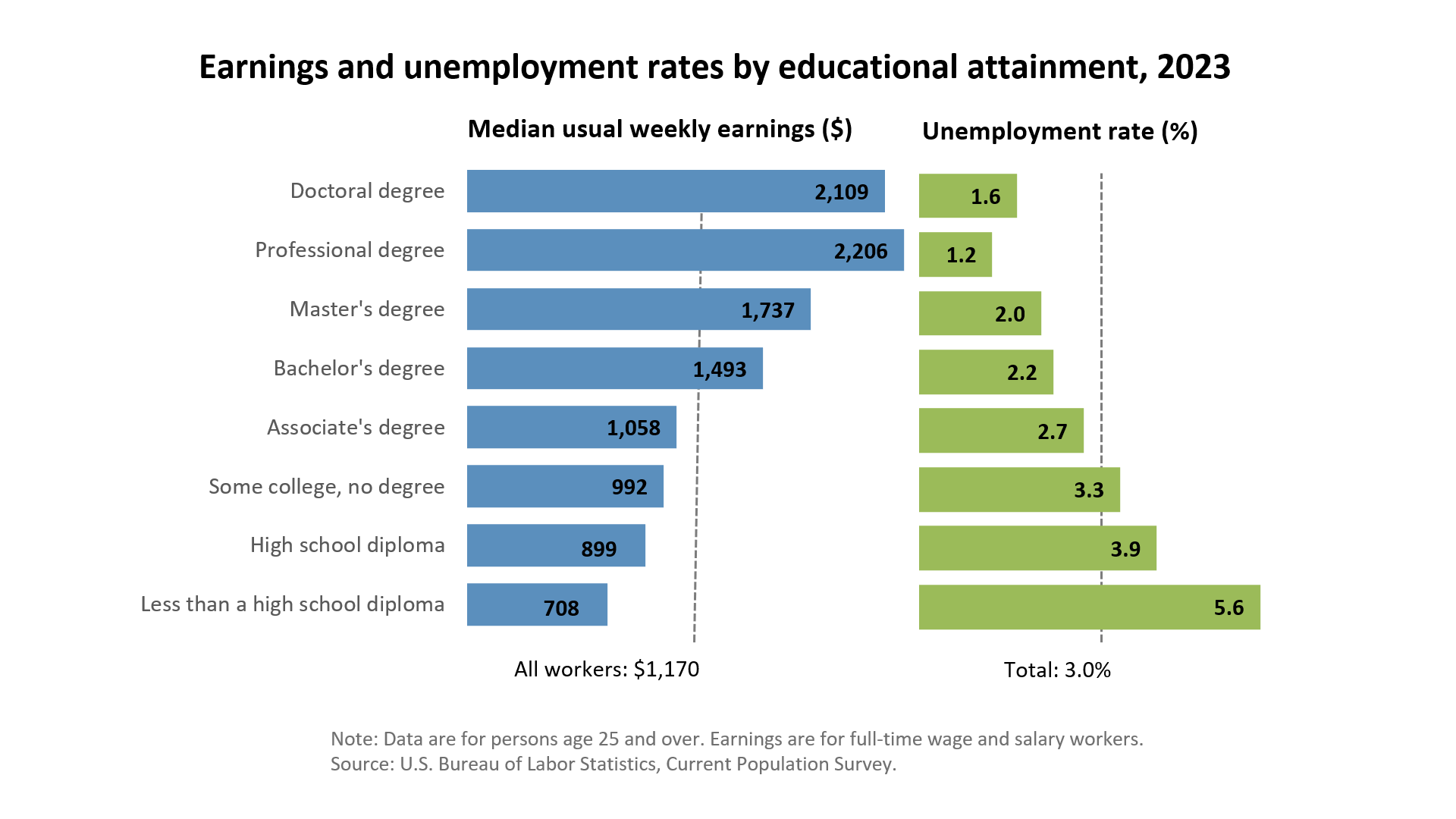
Related Top College Resources










